European project with the collaboration of INESC TEC related to safety and border control areas came to an end
The SUNNY Project ends with a final demonstration in Aveiro
After four and half years, the SUNNY project has ended. Sixteen international entities developed a smart sensors network that can be carried on-board of unmanned aircraft. The role of the aircraft, best known as UAVs (Unmanned Aerial Vehicles) or RPAS (remote piloted aircraft systems), is to monitor the border areas which, when it comes to SUNNY, are especially the areas related to the ocean environment.
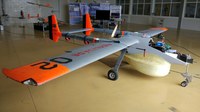
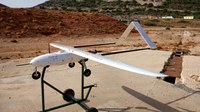
INESC TEC had a crucial role in the project’s development and in the SUNNY system’s concept through the Centre for Robotics and Autonomous Systems (CRAS) and Centre for Telecommunications and Multimedia (CTM). The final demonstration of the project took place in S. Jacinto, Aveiro.
How did the project emerge?
The European Union, especially the Mediterranean countries have been facing a number of challenges with illegal border crossing. This way, project SUNNY emerged due to the need of enhancing the border security in order to control migrations and especially to fight against the crime that occurs during these crossings. The European Commission funded this project at almost EUR 10 million.
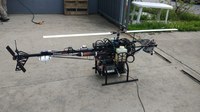
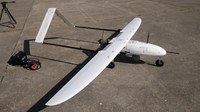
The difference between what exists and the new solution
Currently, the existent applications for this goal only involves an isolated aircraft with sensors that aren’t processed on-board. On the opposite side, SUNNY expects the information processing, the use of several aircraft along with the patrol, a detection, identification and automatic classification system, redundant air-to-air, air-ground communications, a single command and control centre and aircraft with autonomous flight, capable of integrating the perception in the loop control. All of this means that SUNNY is capable of changing the sensorial behaviour, the processing or the itinerary of the aircraft in an autonomous way, without human intervention and based on the observed phenomenon.
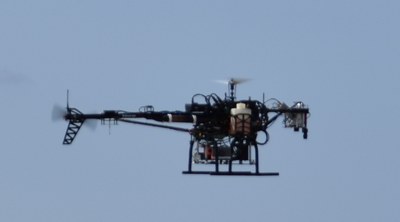
SUNNY’s potential marketing
The system was successfully demonstrated in a real environment and the sensors and robots developed under the project are being marketed by the corresponding partners of project. However, there are still a number of constraints in the use of unmanned aircraft under the flight regulation, which means that it isn’t possible yet to use a system as complex as SUNNY without any sort of restrictions.
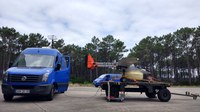
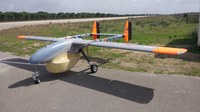
“The integrated system of SUNNY can’t yet be used without restrictions and here I would like to highlight the “yet” aspect. However, the isolated components are already being marketed. I give the example of the image system that was produced and it is now being marketed by a Finnish company or the radar system that is managed by a Dutch company. Regarding the robots, that is, the aircraft, are being marketed by a Greek enterprise and one of them belongs to the Portuguese Air Force ", explains Hugo Silva, senior researcher of CRAS.
The role of INESC TEC
INESC TEC, through CRAS and CTM, was the responsible entity for the development of the on-board processing systems for aircraft, for its use and integration in aircraft and for all the information that is sent for further analysis in the command station and system control. The Institute also took an active part and had an important role in the development of the wireless communication solution, which allows the aircraft to communicate between themselves and with the command and control station.
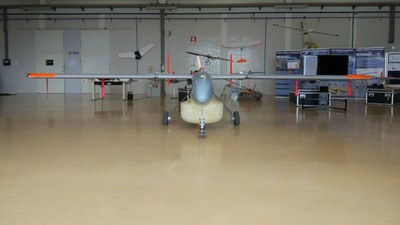
The goal is to now integrate these solutions in industrial and business environment in defense and security, but also in civil applications such as in search and rescue systems and environmental monitoring systems.
What is the impact of the project in the life of Portuguese people?
When it comes to the impact that SUNNY will have in the life of the Portuguese citizens, Hugo Silva mentions that “projects like SUNNY can’t be focused on the short-term impacts but rather on the long-term ones. From the operational point of view, the system that we developed is way too complex for immediate use. For that reason, there is a long way to go in some aspects in order for the system to be used as a whole. However, much of the work done is already operational and the part that isn’t done is going to be ready soon”.
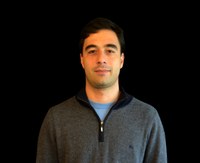
Regarding the Portuguese reality, the developed technology can be applied to solve other real problems, such as the fires where using drones for environmental applications is already being studied. INESC TEC researchers are trying to develop this sort of projects.
The participants of the project
The SUNNY project, which is coordinated by BMT Group (United Kingdom), had the participation of three Portuguese partners - INESC TEC and the Ministry of National Defence (CINAV and FAP) -, MetaSensing from the Netherlands, XENICS and TECNALIA from Belgium, TTI Norte (Spain), the Technical University of Crete , KEMEA, National center for scientific research “Demokritos” and Altus LSA Commercial and Manufacturing from Greece, SPECIM (Finland), Vitrociset, Consorzio Nazionale Interuniversitario per le telecomunicazioni and Leonardo – societa per azioni, and Marlo (Norway).
The researchers mentioned in this news piece are associated with INESC TEC.


